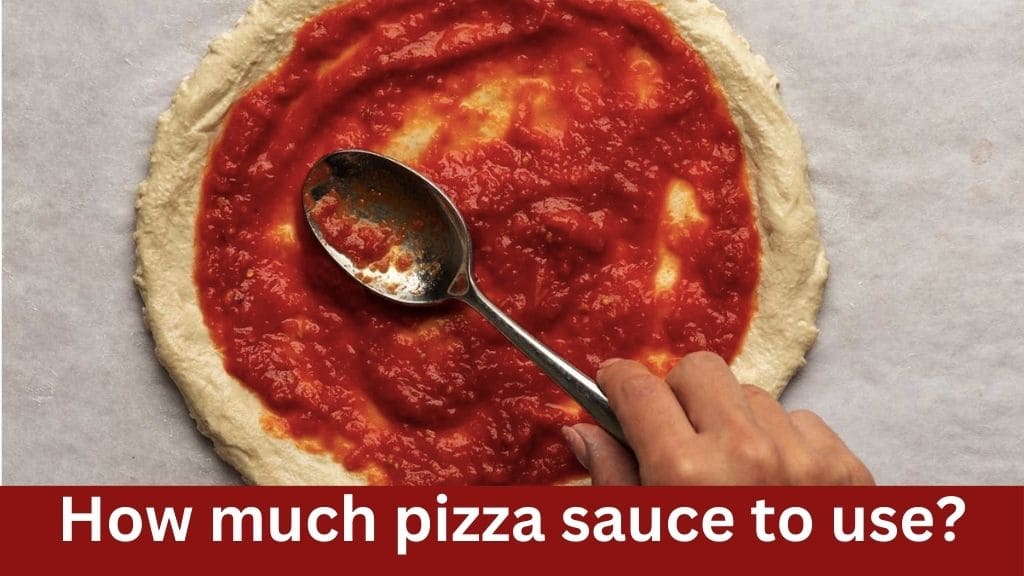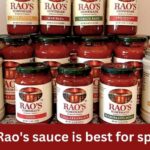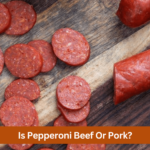Pizza sauce is a crucial component of any homemade pizza, contributing to its flavor, texture, and overall appeal. However, determining the right amount of sauce to use can sometimes be tricky. In this guide, we’ll delve into the art of sauce application, exploring factors such as pizza size, sauce consistency, and personal preference. By the end, you’ll be equipped with the knowledge to achieve the perfect balance of sauce on your pizzas.
Understanding the Importance of Pizza Sauce

Flavor Enhancement
Pizza sauce acts as a flavor enhancer, infusing each bite with the rich, tangy taste of tomatoes, herbs, and spices. It serves as the base upon which all other ingredients rest, providing a harmonious backdrop that amplifies the flavors of the toppings and cheese. The acidity of the tomatoes cuts through the richness of the cheese, while the aromatic herbs add depth and complexity to the overall taste profile. Without the sauce, a pizza would lack the vibrant, multidimensional flavor that we associate with this beloved dish.
Moisture Retention
Beyond its role in flavor enhancement, pizza sauce plays a crucial role in moisture retention. During the baking process, the heat of the oven can quickly evaporate moisture from the dough, resulting in a dry, unappealing crust. The sauce helps to combat this by providing a protective barrier that seals in moisture and prevents the crust from becoming overly dry or tough. Additionally, the sauce acts as a binding agent, helping to adhere the toppings to the crust and ensuring that they stay in place throughout the baking process. As a result, each slice of pizza is moist, tender, and enjoyable to eat.
Visual Appeal
In addition to its functional benefits, pizza sauce contributes to the visual appeal of the pizza. A well-spread layer of sauce adds vibrant color to the crust, creating an appetizing presentation that entices diners. The contrast between the bright red sauce, golden-brown crust, and melted cheese creates a visually stunning dish that is as pleasing to the eye as it is to the palate. Without the sauce, a pizza would appear dull and incomplete, lacking the visual allure that makes it so irresistible.
Factors Influencing Sauce Quantity

Pizza Size
One of the most significant factors influencing sauce quantity is the size of the pizza itself. Larger pizzas naturally require more sauce to adequately cover their surface area, ensuring that each bite is evenly flavored. Conversely, smaller pizzas may require a smaller amount of sauce to avoid overwhelming the other ingredients. By considering the size of the pizza, you can determine the appropriate amount of sauce needed to achieve optimal coverage and flavor balance.
Sauce Consistency
The consistency of the pizza sauce also plays a crucial role in determining the quantity needed. Thicker sauces, such as traditional marinara or tomato paste-based sauces, may require less spreading to achieve adequate coverage due to their denser texture. On the other hand, thinner sauces, such as a simple tomato puree or passata, may need to be applied more generously to ensure that they coat the crust evenly. By adjusting the amount of sauce based on its consistency, you can achieve the desired texture and flavor profile for your pizza.
Topping Density
The density and type of toppings used on the pizza can also influence the amount of sauce needed. Toppings that are more voluminous or absorbent, such as mushrooms, peppers, or onions, may require additional sauce to ensure that their flavors are not overwhelmed by the crust and cheese. Conversely, lighter toppings, such as fresh herbs or thinly sliced vegetables, may require less sauce to avoid making the pizza overly wet or soggy. By considering the density of the toppings, you can adjust the amount of sauce accordingly to maintain a harmonious balance of flavors.
Personal Preference
Ultimately, the amount of sauce used on a pizza is a matter of personal preference. Some individuals prefer a lighter application of sauce, allowing the crust and toppings to take center stage, while others enjoy a more generous layer of sauce for a bolder flavor profile. By considering your own taste preferences and those of your guests, you can tailor the amount of sauce to suit the desired flavor intensity and overall experience of the pizza.
Guidelines for Sauce Application
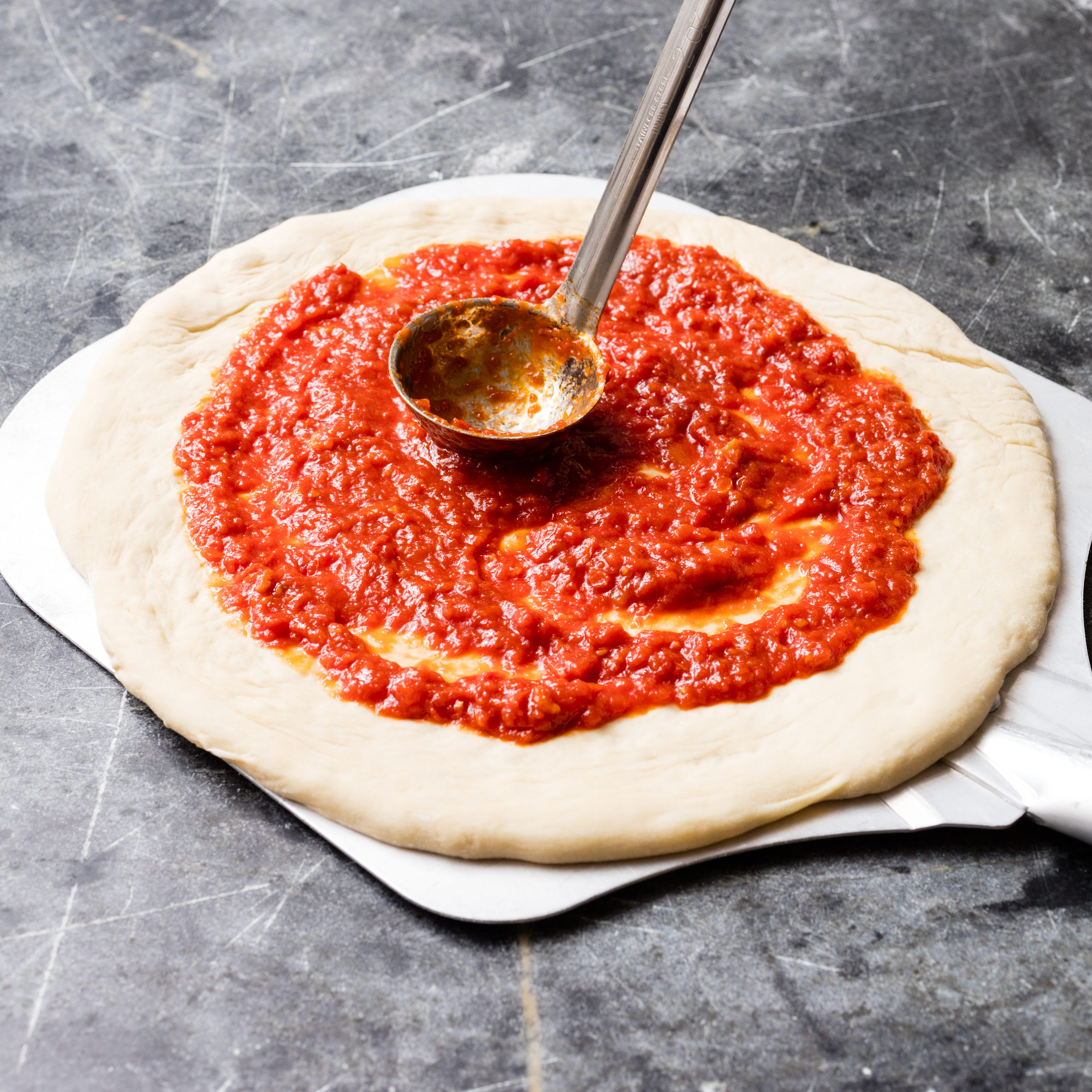
Rule of Thumb
A common rule of thumb for sauce application is to use approximately 1/4 cup of sauce for every 12-inch pizza. This guideline provides a balanced amount of sauce that ensures adequate coverage without overwhelming the other ingredients. However, it’s essential to remember that this is just a starting point, and you may need to adjust the amount based on the specific characteristics of your pizza.
Even Distribution
When spreading the sauce, aim for even distribution across the entire surface of the pizza crust. Using the back of a spoon, a ladle, or a sauce spreader, gently spread the sauce from the center outward, ensuring that it reaches all edges of the crust. Avoid leaving any areas uncovered, as this can result in uneven cooking and flavor distribution. By spreading the sauce evenly, you’ll ensure that each bite of pizza is infused with the delicious flavor of the sauce.
Adjust to Taste
While the 1/4 cup guideline provides a good starting point, don’t hesitate to adjust the amount of sauce according to your personal preference and the specific characteristics of your pizza. If you prefer a saucier pizza or are using toppings that benefit from extra moisture, feel free to add a bit more sauce. Conversely, if you prefer a lighter application of sauce or are using toppings that are prone to becoming soggy, you can reduce the amount of sauce accordingly. The key is to find the right balance that enhances the overall flavor and texture of the pizza.
Experimentation
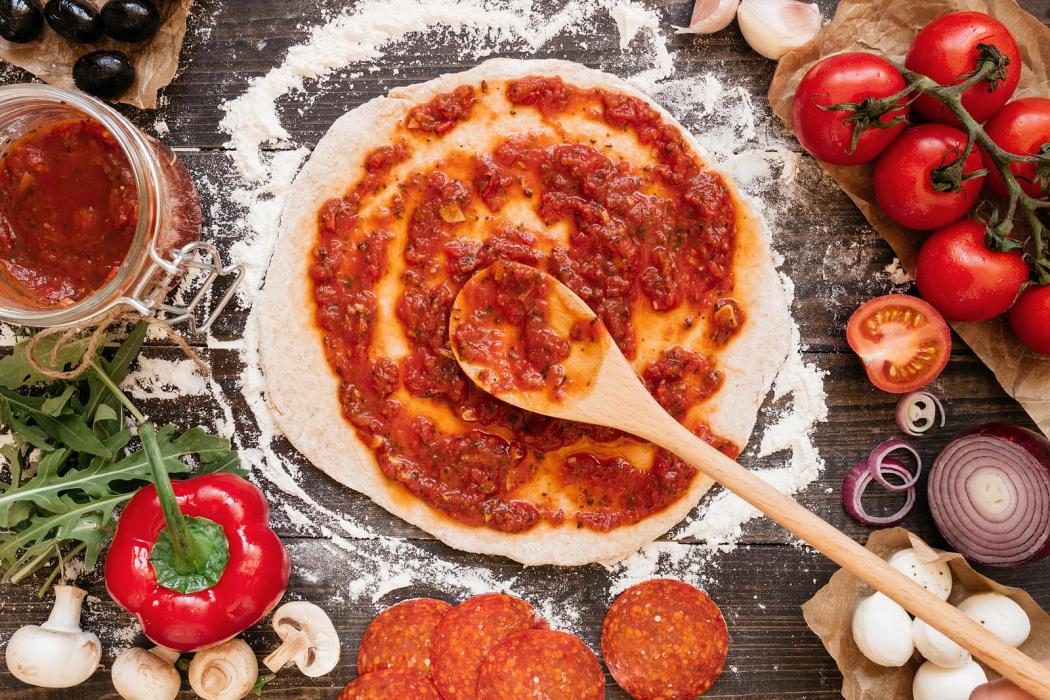
Don’t be afraid to experiment with different sauce quantities and application techniques to find what works best for you. The beauty of homemade pizza is the opportunity to customize every aspect according to your taste preferences. Try varying the amount of sauce used, the thickness of the sauce, or the spreading technique to see how it affects the final result. By experimenting with different approaches, you’ll develop a better understanding of how sauce quantity impacts the overall taste and texture of the pizza, allowing you to achieve the perfect balance every time.
Consistency
Pay attention to the consistency of the sauce as you spread it onto the crust. If the sauce is too thick, it may be challenging to spread evenly, resulting in clumps or uneven coverage. Conversely, if the sauce is too thin, it may run off the edges of the crust or make the pizza overly soggy. Aim for a sauce that is thick enough to coat the crust evenly but thin enough to spread easily. If necessary, you can adjust the consistency of the sauce by adding a bit of water or simmering it longer to reduce excess moisture.
Conclusion
Achieving the perfect balance of pizza sauce is an art that requires consideration of various factors, including pizza size, sauce consistency, topping density, and personal preference. By following the guidelines outlined in this guide and experimenting with different techniques, you’ll be able to master the art of sauce application and elevate your homemade pizzas to new heights of deliciousness. Whether you prefer a light drizzle or a generous smothering of sauce, the key is to find what brings you pizza perfection with every bite.

